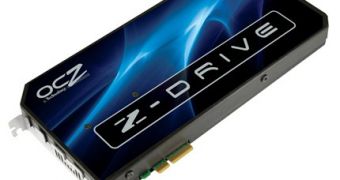When it comes down to performance SSDs have taken the storage world by storm, but there are a group of companies out there that, unimpressed by the performance of the SATA interface, started to develop PCIe SSD drives, a group of hardware makers comprised from the likes of Dell, IBM and Intel wanting to make these types of solutions far more common in the not so distant future.
And since the first step in any direction requires a standard to be developed they have started the Solid State Drive Form Factor Working Group that will focus on customers who are pushing the storage IO envelope and require high-performance, easy-to-use, cost-effective storage solutions to optimize CPU performance.
Made up out of Dell, EMC, Fujitsu, IBM and Intel as well as Contributor Members Amphenol, Emulex, Fusion-io, IDT, Marvel Semiconductor, Micron Technology, Molex, PLX, QLogic, STEC, SandForce and Smart Modular Technology the group will work on developing a standard form factor as well as a new interface for PCIe SSDs.
This actually means that a special connector will be developed to support SAS/SATA 3.0 as well as PCIe 3 together with a new form factor, better suited for that future connector, hot-plug capabilities being also on the development list.
“Intel sees PCIe continuing to grow in importance as a solid state drive interface driven by native attach points in our enterprise platforms.
Intel is looking forward to working with SSD Form Factor Working Group to collectively define the essential building blocks for future generations of non-volatile memory storage solutions,” saidTom Macdonald, Vice President of Intel Architecture Group and General Manager of Platform Components Group at Intel.
Although this new standard will eventually be developed for enterprise customers I am sure that if everything works well we would actually see it arrive in the consumer space as well, and that may be just what PCIe SSDs need in order to deliver the ease-of-use that we have been accustomed by the SATA interface.

 14 DAY TRIAL //
14 DAY TRIAL //